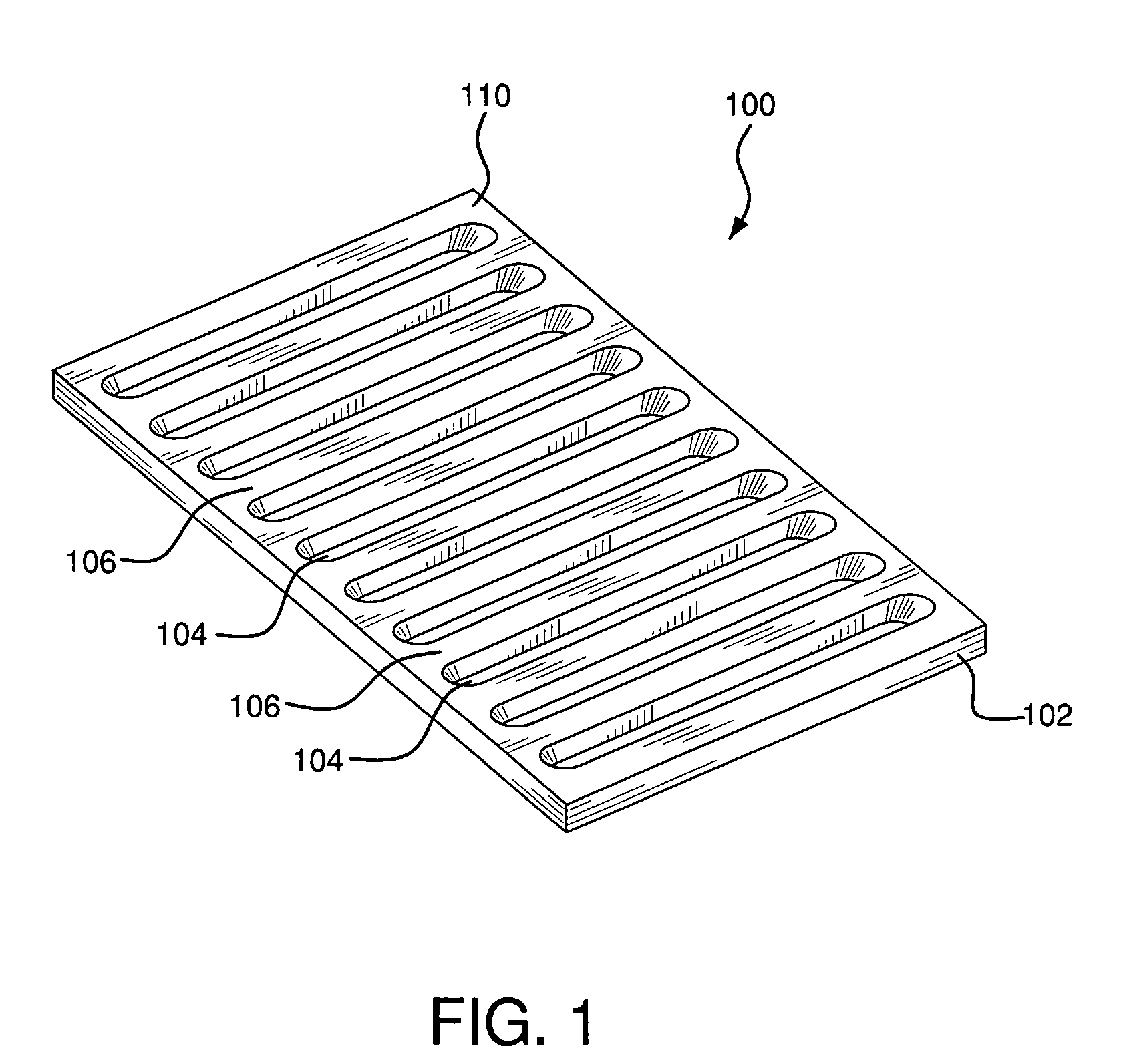Growth stimulating wound dressing with improved contact surfaces
a wound and growth stimulation technology, applied in the field of wound contact devices, can solve the problems of no space above the wound surface, no structure, soggy and soft,
- Summary
- Abstract
- Description
- Claims
- Application Information
AI Technical Summary
Benefits of technology
Problems solved by technology
Method used
Image
Examples
case study 1
[0068
[0069]Patient A is a 70 year old male with a Stage IV decubitus ulcer on the right hip with significant undermining. A wound contact device including the structured material and wound contact surface of the present invention was applied to the wound and an adhesive film was placed over the wound and the wound contact device. A suction of about 1.1 PSI was applied beneath the adhesive film to impart a force upon the wound. The suction was maintained substantially continuously. The wound contact device was replaced every two to four days. After use of the wound contact device for 30 days, the undermined portion of the wound had virtually healed and the area of the wound opening had decreased from 66 square centimeters to 45 square centimeters. A split thickness skin graft was applied to the wound.
case study 2
[0070
[0071]Patient B is a 50 year old male with a facture of the right ankle with exposed bone. A plate was used to reduce the fracture and a rectus abdominus free flap was performed to cover the exposed bone and hardware. The flap only partially survived resulting in an open wound with exposed bone and hardware. A wound contact device of the present invention was applied to the wound and an adhesive film was placed over the wound and the contact device. A force was applied to the contact structure by the application of an ace bandage wrapped around the ankle and / or by the application of suction. The suction force was generally applied for about half of the day and the force of the bandage wrap was maintained for the remainder of the day. For a number of days, the bandage wrap was solely used to impart the force. When the force was imparted by suction, a suction of between about 1 PSI and about 2 PSI was used. In less than 2 weeks, new tissue had grown over the exposed hardware. Wit...
PUM
| Property | Measurement | Unit |
|---|---|---|
| depth | aaaaa | aaaaa |
| thickness | aaaaa | aaaaa |
| thickness | aaaaa | aaaaa |
Abstract
Description
Claims
Application Information
 Login to View More
Login to View More - R&D
- Intellectual Property
- Life Sciences
- Materials
- Tech Scout
- Unparalleled Data Quality
- Higher Quality Content
- 60% Fewer Hallucinations
Browse by: Latest US Patents, China's latest patents, Technical Efficacy Thesaurus, Application Domain, Technology Topic, Popular Technical Reports.
© 2025 PatSnap. All rights reserved.Legal|Privacy policy|Modern Slavery Act Transparency Statement|Sitemap|About US| Contact US: help@patsnap.com



